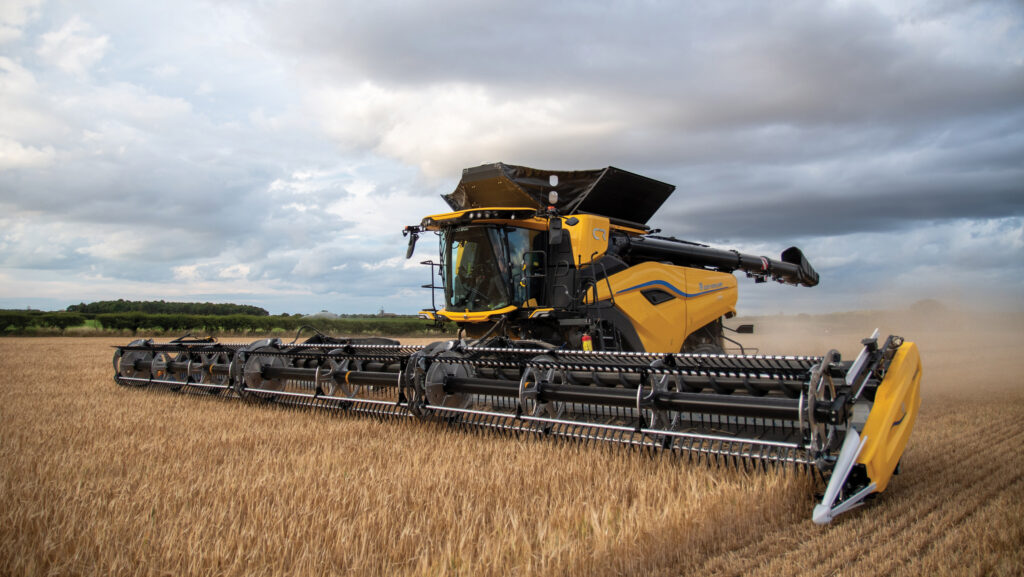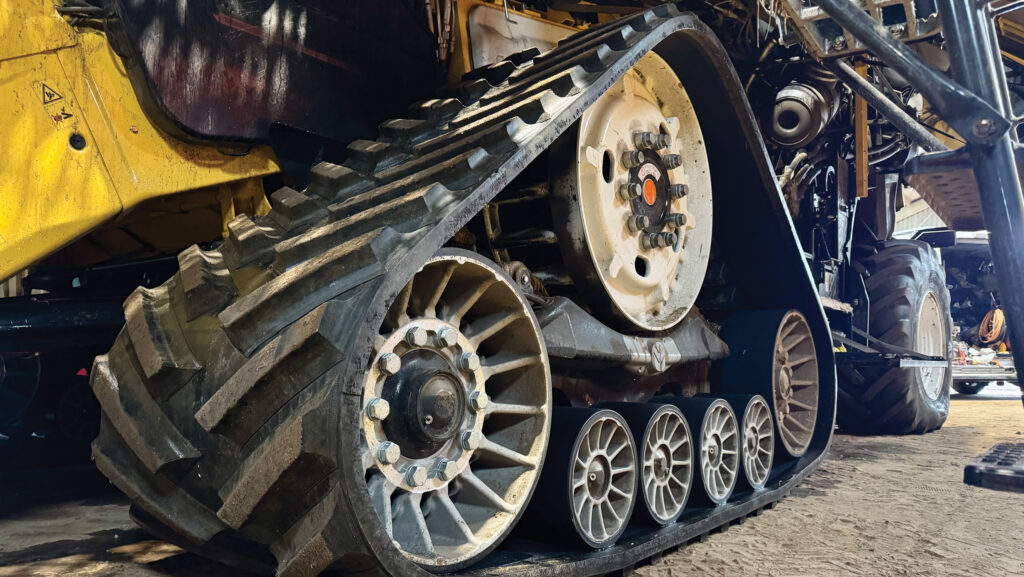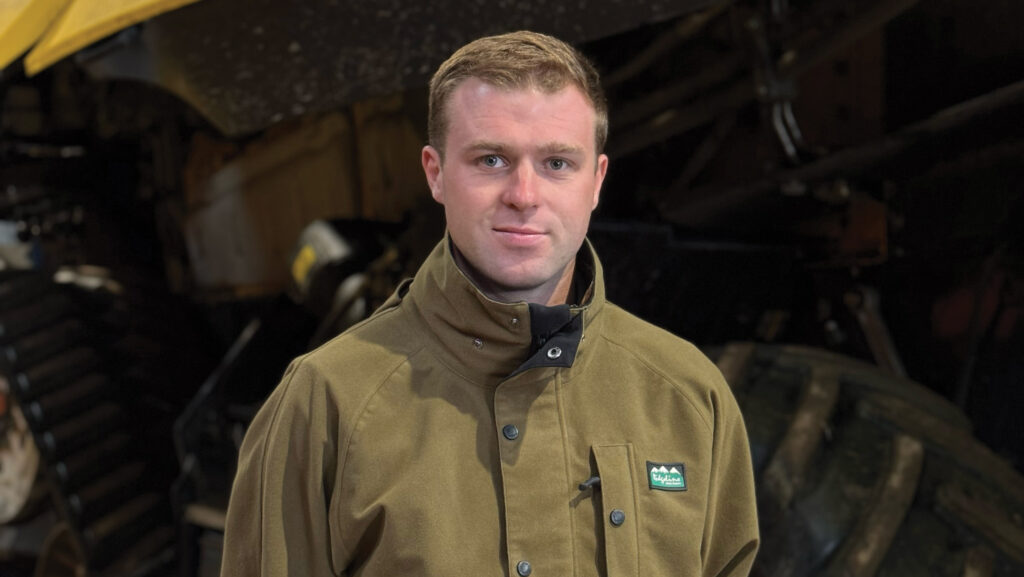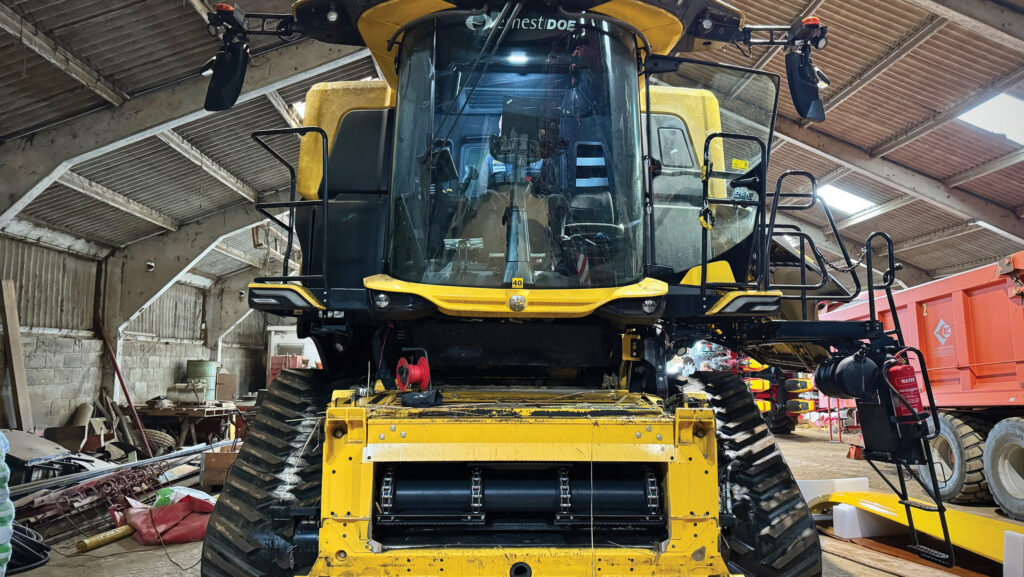New Holland’s monster CR11 combine notches 100t/hour in Norfolk
 © Tom Franks
© Tom Franks New Holland has edged ahead in the perpetual race for grain harvesting supremacy with its highest output and most expensive combine yet.
The CR11 is reckoned to be good for spot rates of up to 140t/hour in wheat, ostensibly bettering those of its adversaries – John Deere’s X9 1100 and the Claas Lexion 8900.
See also: Eat, sleep, cut, repeat: Eight months with two custom combine crews
Robinson Farms’ New Holland CR11

© MAG/Oliver Mark
- Year 2025
- Engine Six-cylinder, 15.9-litre Cursor 16
- Max power 775hp
- Threshing system Twin 600mm-wide rotors
- Grain cleaning Twinclean setup with dual upper/lower sieves and clean grain augers
- Header 15.2m MacDon FD2
- Grain tank capacity 20,000 litres
- Unloading speed 210 litres/sec
- Approx on-farm price £700,000, plus £160,000 for 15.2m table
Such prodigious performance comes at a price. Approximate on-farm figures of £700,000 for the harvester and £160,000 for a 15.2m (50ft) MacDon header put it not far short of the inheritance tax threshold alone.
On paper, the Beast of Belgium, built at the firm’s Zedelgem plant, looks closely matched to its peers.
It is powered by a 775hp six-cylinder engine, 15hp shy of the 2019-launched Lexion but 75hp more than the X9 that hit the market a year later.
And it can handle a 15m-wide header – the same as the Deere, 1.2m larger than the Claas.
However, it does take the crown for grain carrying capacity, with its 20,000-litre hold trumping the competition by 2,000 and 3,800 litres, respectively.
But it’s the simplicity and efficiency of the threshing system that is key to hitting those stellar spot rates.
The CR11 can scythe through more crop an hour and lose less grain doing so than the long-standing CR10.90, which posted its own combining world record just over a decade ago.
It was this level of performance that convinced East Anglian arable outfit Robinson Farms to make its biggest-yet single machine investment, pairing a CR11 with MacDon’s FD2 Flexdraper.
We caught up with Robinson Farms’ assistant manager Harry Gill as the combine carved its way through 1,643ha – 121 fields – of combinable crops on the north Norfolk coast.

Harry Gill © MAG/Oliver Mark
Why a New Holland CR11?
We wanted to replace our five-year-old Claas Lexion 8900 and were open-minded to the options, so we had a good look at all the big players.
There was nothing to dislike about the Claas, but neither it nor the Deere X9 could compete with the CR11 in terms of performance. It’s in a league of its own.
By our reckoning, its output beats the competition by about 30%, with the capacity to match two mid-sized machines.
Gaining so much efficiency over the Lexion means harvest should be quicker, easier on staff, and less stressful to manage, and we can get cultivations started and cover crops in.
Even in a stop-start year like we’ve had, we can fire it up at 3pm, knock through 40ha and still finish at 9pm.
This capacity comes into its own on land near the coast; we need to be oversized, as the weather has a bigger say on when we can cut.
What header did you go for?
As we’ve subsequently found, the CR11 is a hungry combine and the fuller it is, the better it goes.
For that reason, and to eke out as much performance as possible, we decided to pair it with a 15.24m (50ft) MacDon FD2 Flexdraper. It’s big, though in other parts of Europe people are running an 18.6m (61ft) table.
It wasn’t entirely new territory, as we’d had a 45ft Convio Flex on the Lexion. However, that was far heavier and, on early impressions, more expensive to run, as the skids tended to wear out pretty quickly.
The job the MacDon does is amazing: it leaves the stubble at a perfect 10cm and the cross-auger evens up lumpy crop so the flow is smooth by the time it reaches the combine’s throat.
You’d think that throwing fine material back out to 15m would be an issue, but the dual-disc spreader actually over-delivers. We have it set at 14m to get to the extremities of the table, and the spread pattern is perfect.
This is helped by the radars each side, which work like car parking sensors to monitor the throw and automatically tweak the rotor speeds and vane angles to account for crosswinds and slopes.
We usually chop about half of the acreage; the rest is round baled by a gang of five McHales for pigs.
The drivers haven’t complained about the size of the swath – even behind 5ft tall rye.
That might be in part because the rotors help bundle it together more tightly than a straw walker machine, which is handy for baling in good conditions but less so when it rains.

© MAG/Oliver Mark
What’s output like?
The Lexion 8900 typically managed 5-6ha/hour and a reliable 40ha/day. By comparison, the CR11, with its 5ft (roughly 10%) wider header, is about 25% better.
A standard day is now 50ha and it whipped through 10ha/hour – at 80t/hour – in some of the less bulky barley crops that had the grain yield, if not the straw. Our best day was 72ha and we were finished by 8pm.
It even managed 8ha/hour in 9t/ha, 5ft tall rye, with minimal losses. It just eats whatever is in front of it.
We haven’t yet got into the wheat [at the time of writing] but a demo CR11 on a neighbouring farm managed just over 100t/hour.
Naturally, we were a bit worried about getting that insane volume of grain off the combine and into store quick enough.
But the 20,000-litre tank has worked perfectly for the three 18t trailers – we ran two with the Lexion – as they can be brimmed in one go without requiring any further top-ups.
And unloading is easy. The auger chucks it out at 210 litres/sec, making it about 90 seconds for a full offload, and hydraulic control of the pivoting spout end means the flow can always be aimed into the right part of the trailer.

© MAG/Oliver Mark
What’s it like to drive?
It’s such an expensive machine that the driver was naturally nervous about operating it. But that’s long since forgotten, as it’s so simple.
We tend to run the PLM Intellisense system – leaving the computer to work out the best combination of settings – for all crops except the rye, where the sheer volume of straw makes it better to set up in manual mode.
Losses are minimal, usually between 0.4% and 0.5%. However, it does work very differently to the Claas, which has taken a bit of getting used to.
On the Lexion, all the grain losses were in the straw, whereas on the CR11 they’re spread around, with the rotors less culpable and more, relatively speaking, lost on the sieves.
It also treads that bit gentler – we run the VF 620/70 R30s tyres at 26psi and, because the front and rear of the tracks are raised slightly, we don’t get that headland scrubbing on end-of-bout turns that we did with the Terra Tracs.
All in, it’s about 30cm wider than the 8900 but shorter in body length, which makes it easier to turn into tight field entrances.
The furthest block of land is 16 miles away so we try and work towards it, as extended periods of road travel is neither good for the combine nor the public.
What could be improved?
So far, so good. We’re still in the honeymoon phase, but the support we’ve had from Ernest Doe at North Walsham has been great – from the initial demo to a tour of the Belgian factory and, subsequently, in-field support and software updates.
One of the things we love is the ease of maintenance.
There are just two 50-hour grease nipples on the combine – largely because there are driveshafts rather than belts and chains – and five daily ones on the MacDon header.
This means that in the morning we can pretty much just refuel and go.
It also keeps itself really clean, with big fans cooling the radiators and firing air across the engine bay from behind the grain tank rearwards.
We still blow everything down each morning, but it’ll manage 200ha before the air filters need clearing out.
The sole niggle we’ve had so far was with an actuator not lifting a panel in the middle of the machine high enough, which is now sorted.
And the only other things we’d change are some of the controls in the cab, which are the opposite way around to the Lexion, and the position of the park brake.
Those petty gripes aside, it has been perfect. It’s big, simple and, crucially, does what New Holland says it will. That’s good enough for us.

